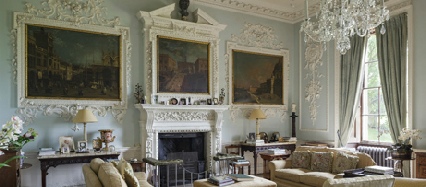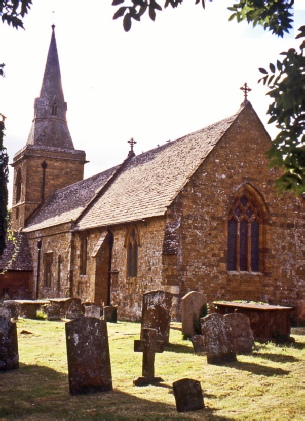


|
Introduction From the first quarter of the nineteenth century dates an historical record of Farnborough that is a rarity in national terms. The 1821 census, giving the names of all the householders and, for the first time in a census, the approximate ages of all the inhabitants, survives for only 300 places out of over 40,000 (less than 1%), and Farnborough is one of them. As two of my ancestors were Farnborough householders, I made a complete transcript. It is published on this site, together with images from the scanned original, by permission of the Warwickshire County Records Office. Also featured are the accounts for 1758- Farnborough is a village of 265 inhabitants (in 2011) in the local government district of Shakespeare’s birthplace of Stratford- T The other notable building in Farnborough is the Hall, home to the Holbech family since Ambrose Holbech acquired it in 1684. Remodelled in the 1700s, it has outstanding rococo plasterwork, as seen below. Today it is a National Trust property, but remains a family home.
Photo: ©National Trust The magnificent interiors date from the time of William Holbech II, grandson of Ambrose. He was the employer of Thomas Elkington, whose accounts, referred to above, include a veiled complaint about the late payment of his wages by William Holbech. History shows that quite a number of the gentry and aristocracy were notoriously bad payers. In the twentieth century, probably the best- |


| 2 Sitemap |
| 3 Maps - main page |
| 4 Pre 1844 O.S. map Farnborough and vicinity |
| 5 Ordnance Survey 6" scale 1885/6 |
| 2 Accounts 1 - Feb-May 1758 |
| 3 Accounts 2 - May-Sept 1758 |
| 4 Acc 3 - Sept 1758-Feb 1759 |
| 5 Acc 4 - personal & place names |
| 6 Thomas Elkington's ancestry |
 he parish church dates at least from the 12
he parish church dates at least from the 12